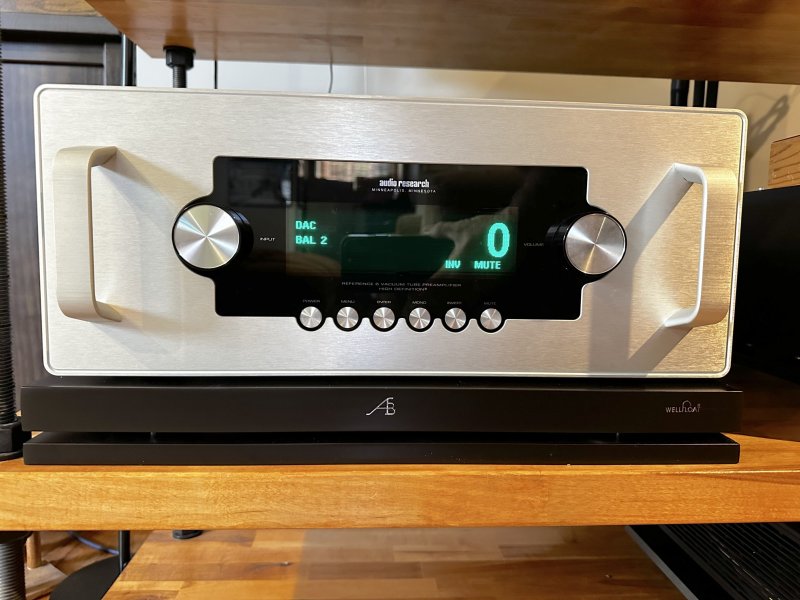Since you are open to experimentation you may want to try different footers designed to drain/dissipate/tune internal component resonances in combination with your Wellfloat platform, and for comparison, in combination with your damped spring feet under a board. Your damped spring feet mostly provide decoupling - they do little to drain/dissipate internal component resonances. Note that many high end components have feet that are cheaply made,which provide minimal decoupling (e.g., with different material than the casework and a polymer or rubber pad). It follows that in most cases if you put an isolation footer under a component's factory feet you guarantee that it won't drain/dissipate internal component resonances effectively. Every serious device I'm aware of for draining/dissipating internal component resonances is designed to either replace the factory feet (screw in) or to otherwise be placed directly against the chassis bottom. If you look at the Mechanical Vibration Management section of the Audio Exotics website for example you will see that even though they offer/use "world's best" isolation devices (none of which use springs), they use them in combination because some are better at decoupling and others at draining/dissipating/tuning internal component resonances.Thanks for those links. I read some other reviews on their Babel product too. No question they know what they are doing. Regarding that Delta discussion: Note the link showing the FFT plots and IMD calculations with and without the Delta footers. Frankly that difference in IMD is negligible from an audible standpoint. And I think that was output at the phono cartridge with the Delta footers on the speakers. A better comparison might have been a microphone set up at the listening position to see how the final outcome sounds.
I believe isolation with springs is neutral, ie it does not affect tone or timber of the component. Rather it clarifies by removing destructive reflections that can add or subtract to/from the music which can be interpreted as coloration sometimes. Dampers can subtract but also can and will color the sound of a component. That's not necessarily bad- we tend to want to tune our system to our own specific sound preferences. That's why I like to get out and hear other hifi systems to compare and assure myself that I have not strayed from the high fidelity path. I also like to get feedback from others about how my system sounds. It is not always good feedback but I appreciate that (unless it's my brother) and end up making my system sound better.
At this point my expectation is that I will not hear much difference between my spring isolation setup and the Well Float board, but I am usually wrong. When I put the Gaia footers on my Thiel speakers I found they did not completely isolate my speakers from the floor like my spring platforms but the Gaia footers made my speakers sound better. So I keep an open mind. The goal is always better sound, more music.
Last edited:








